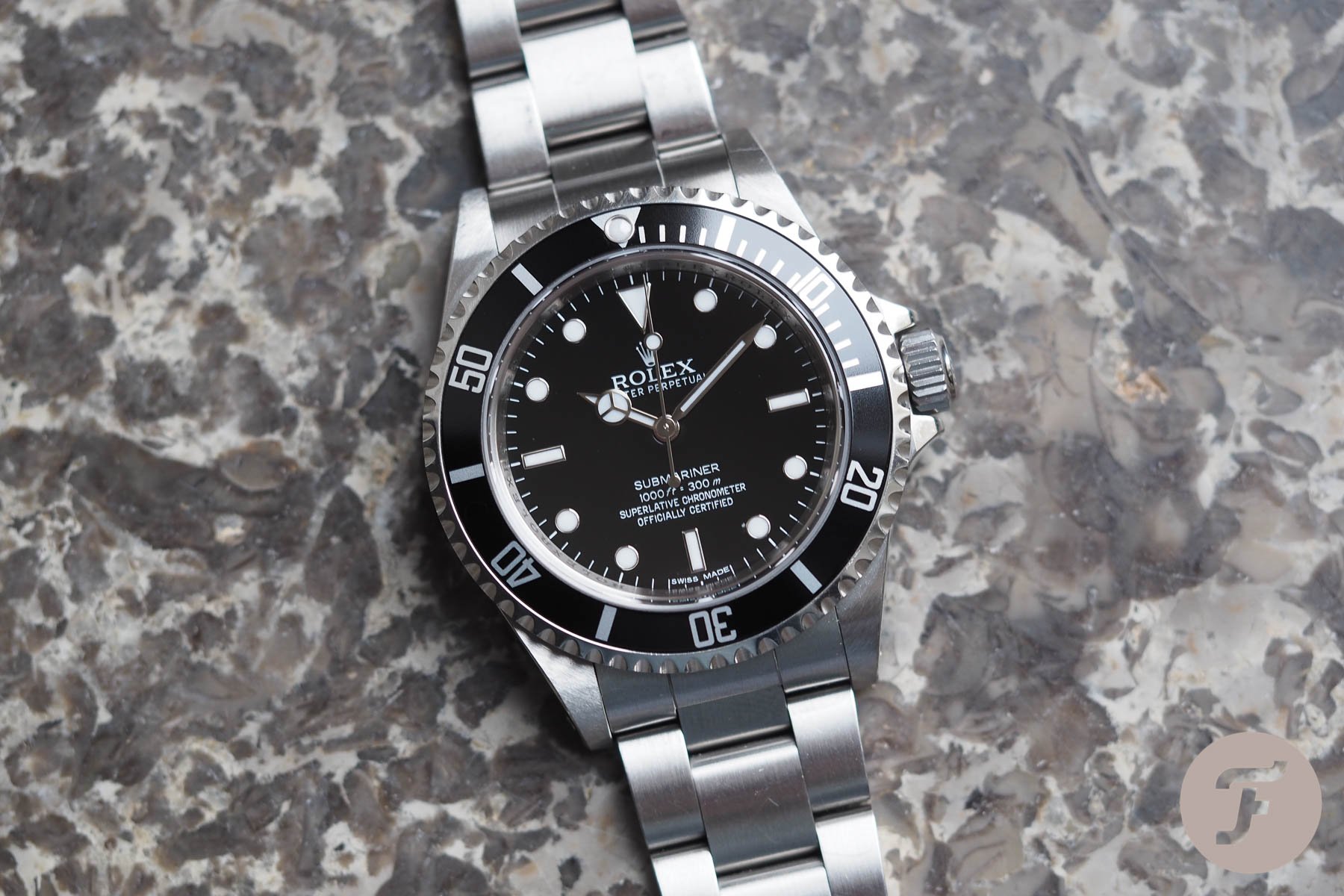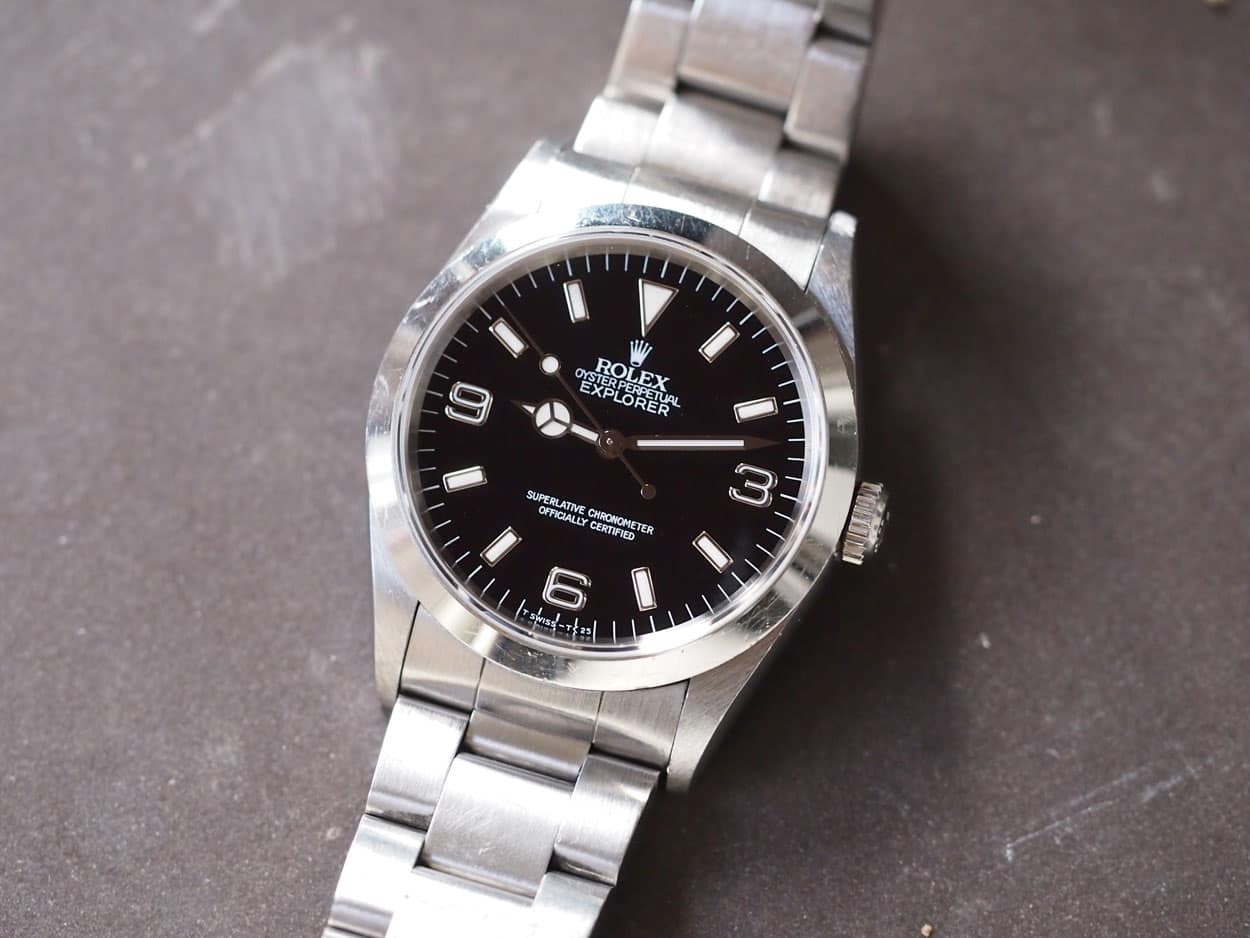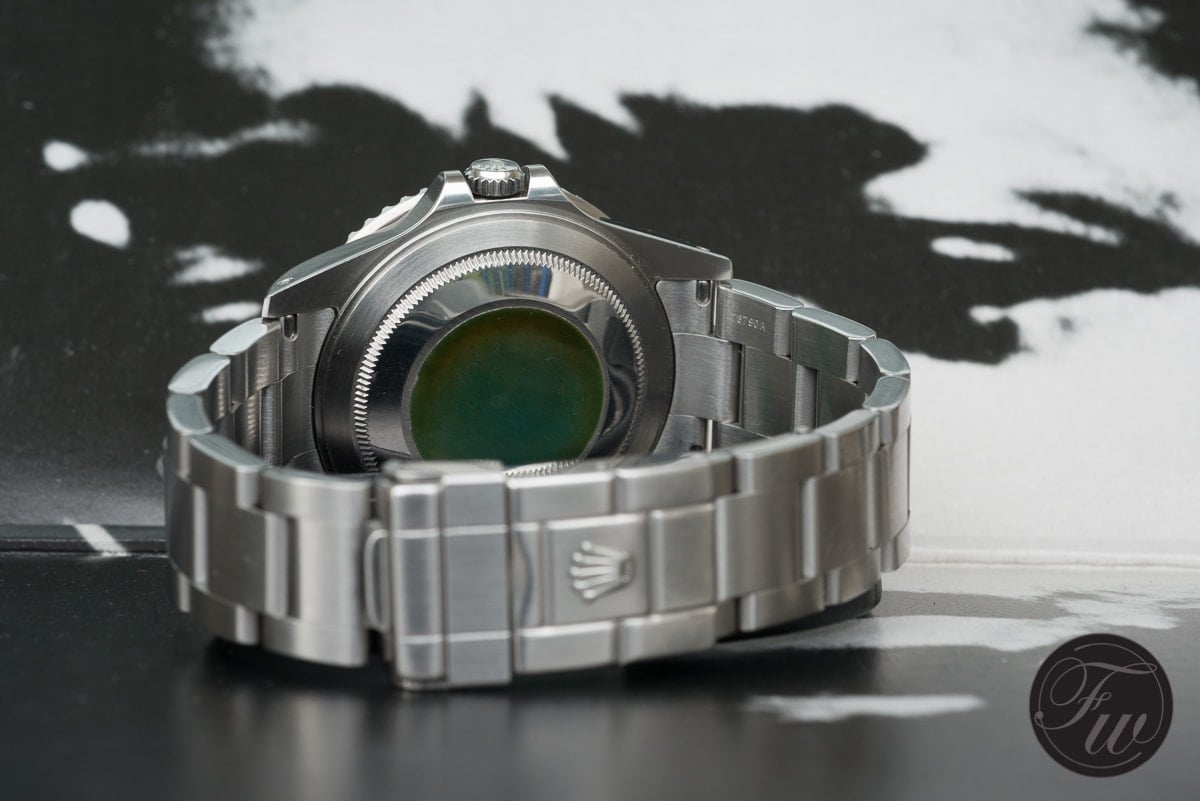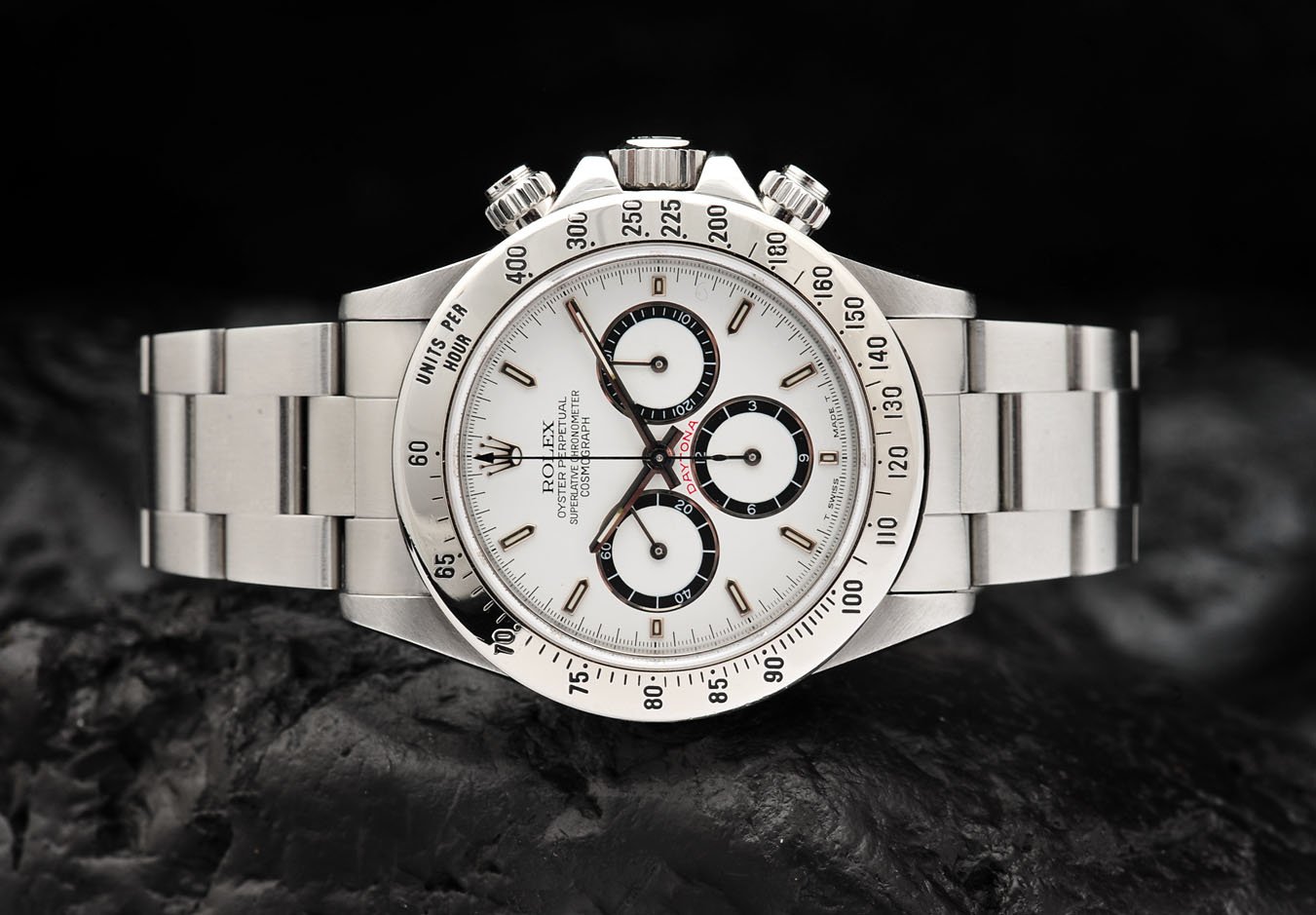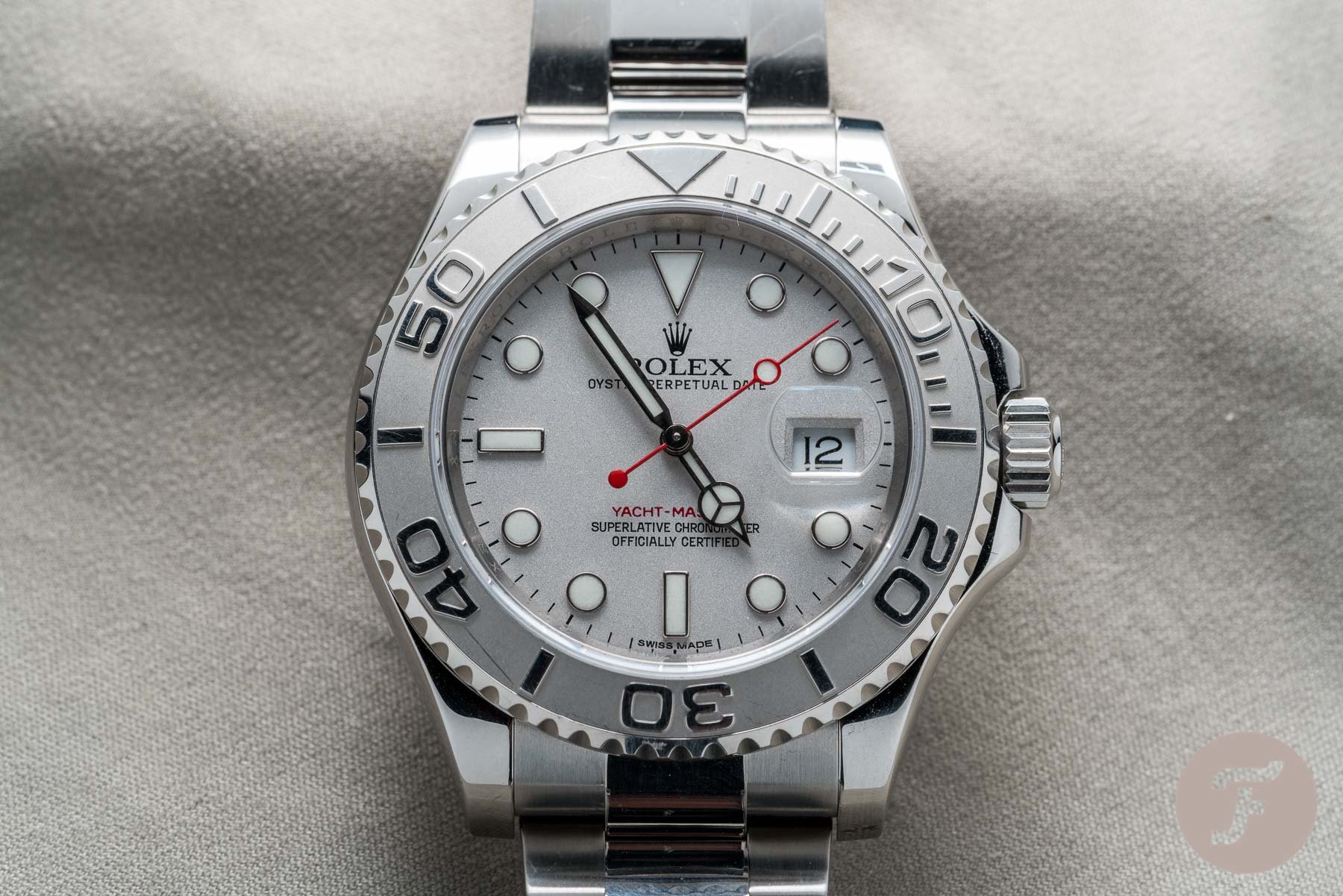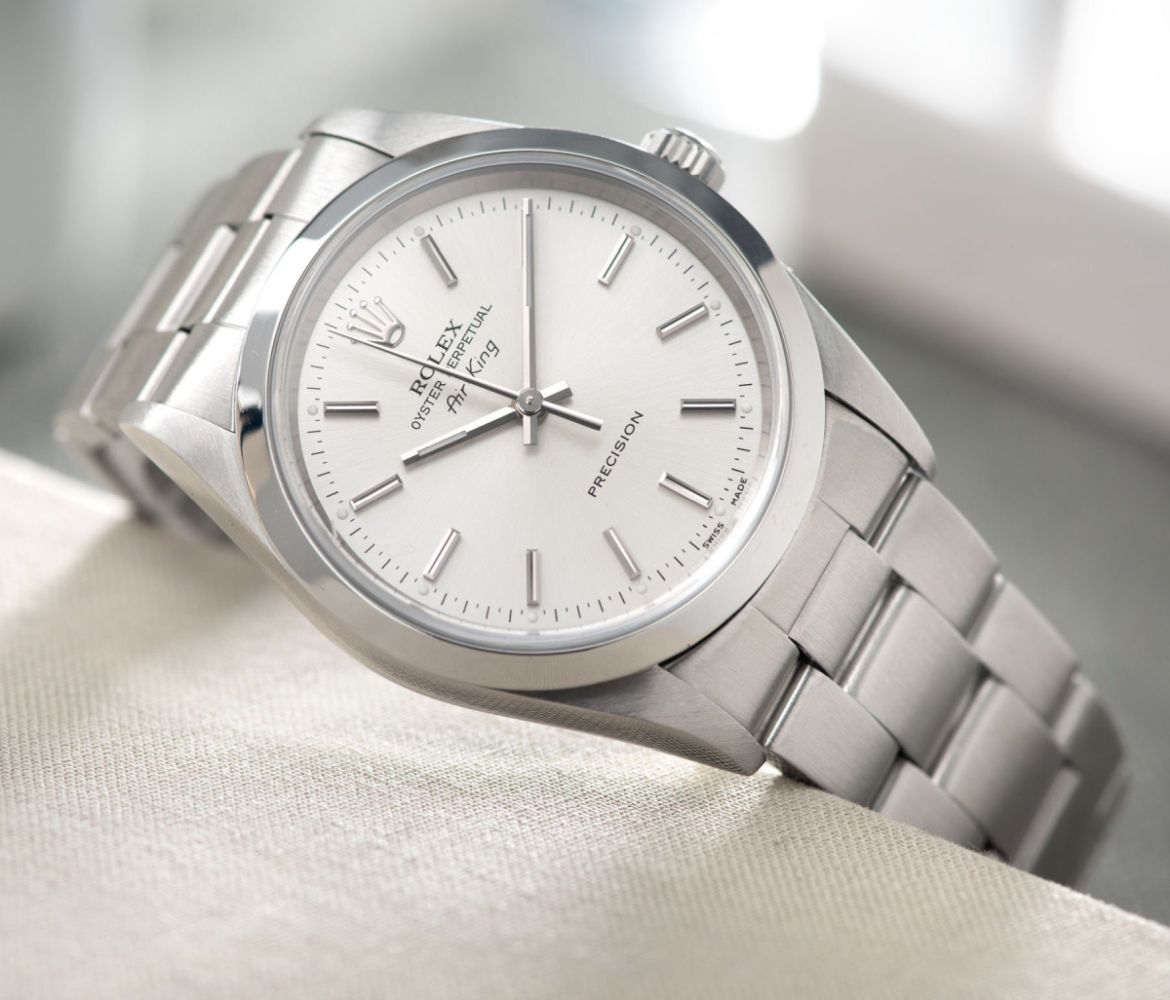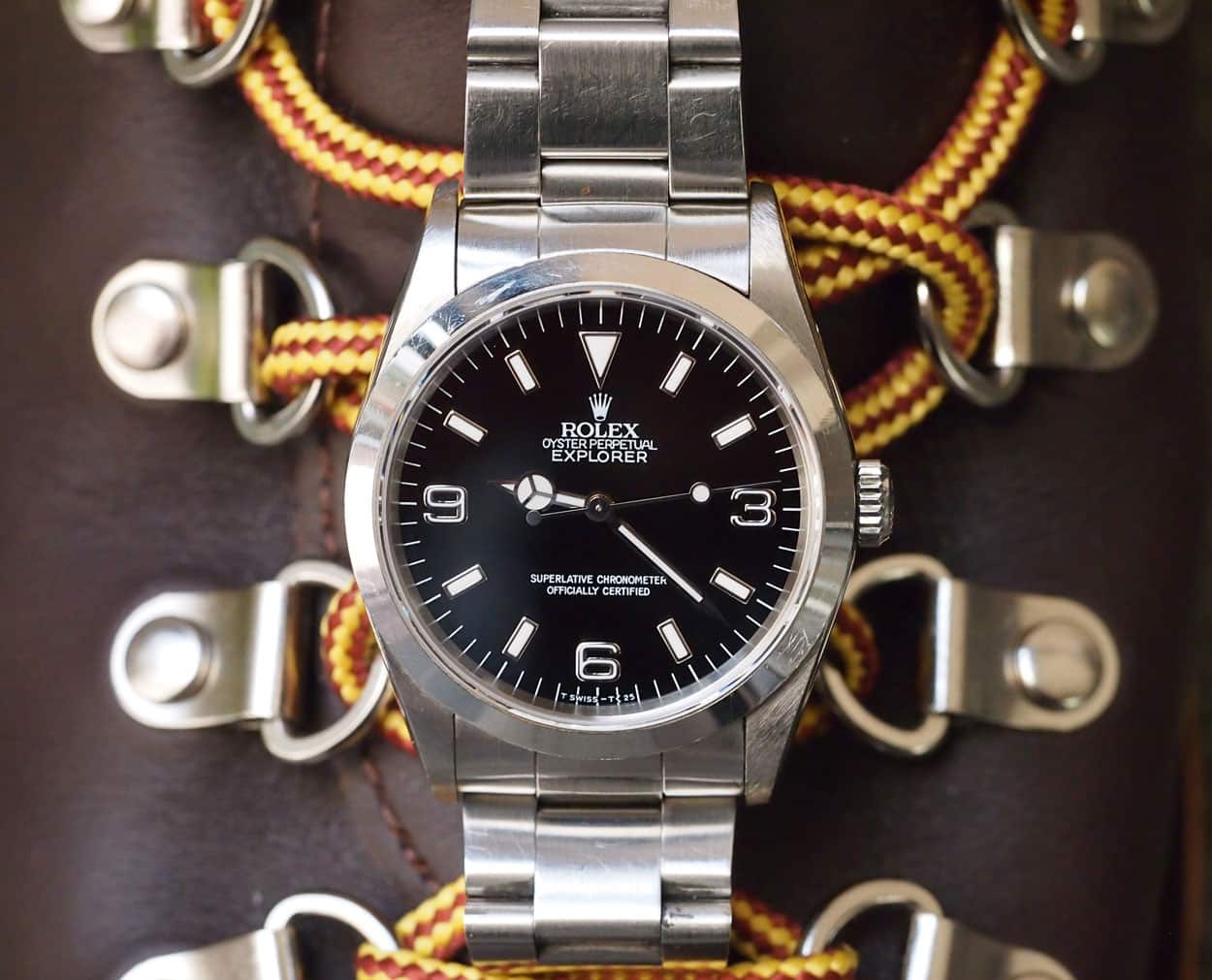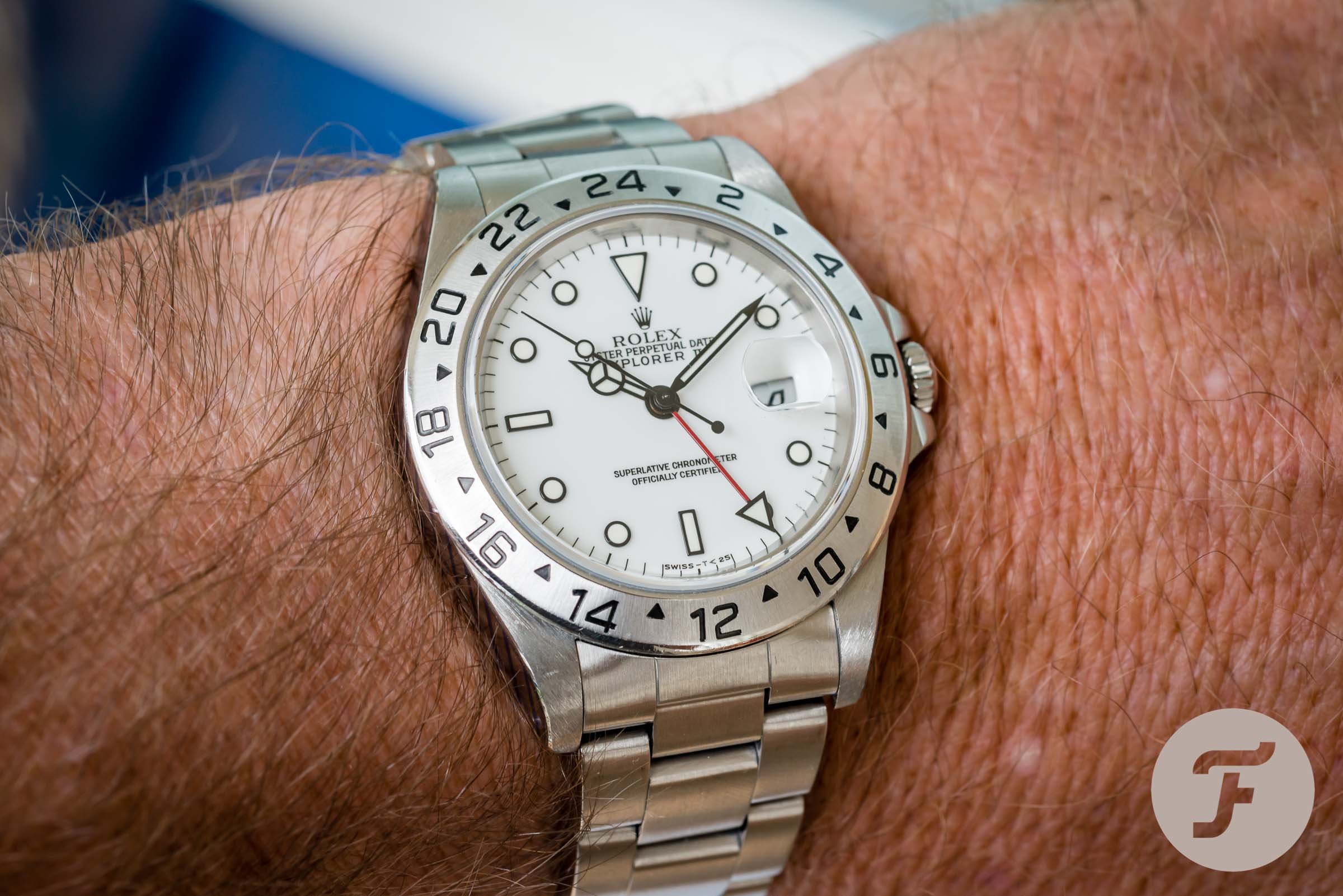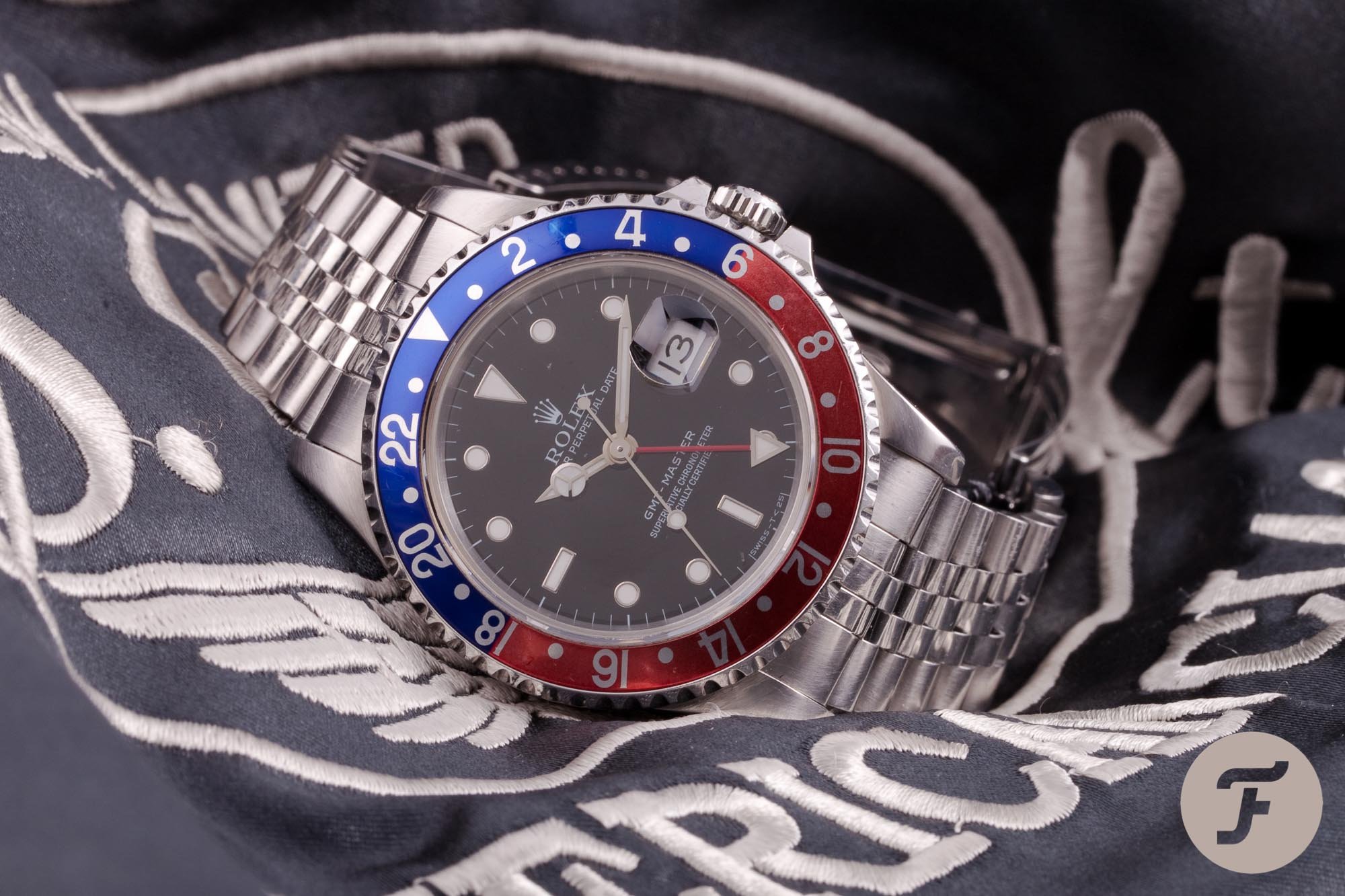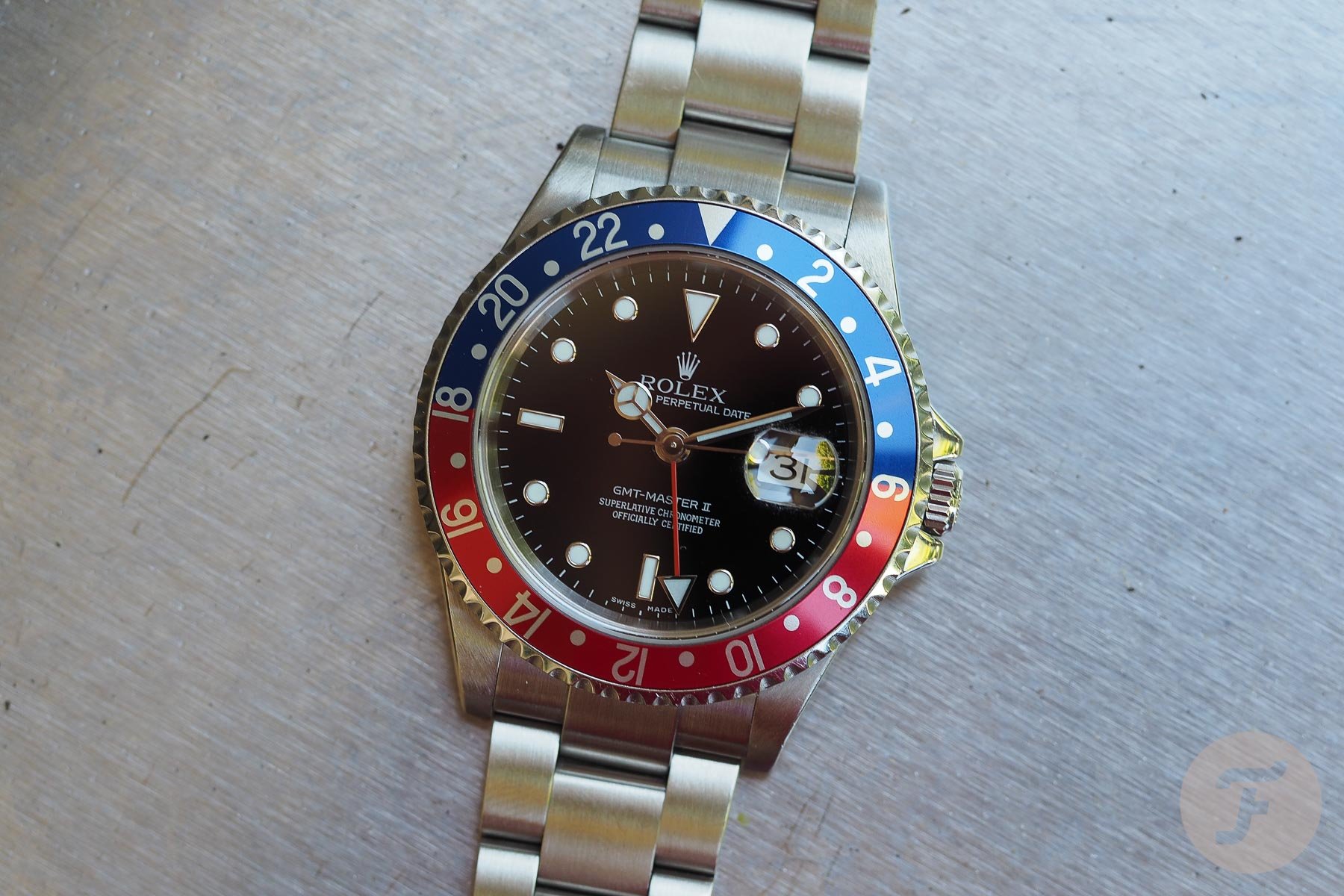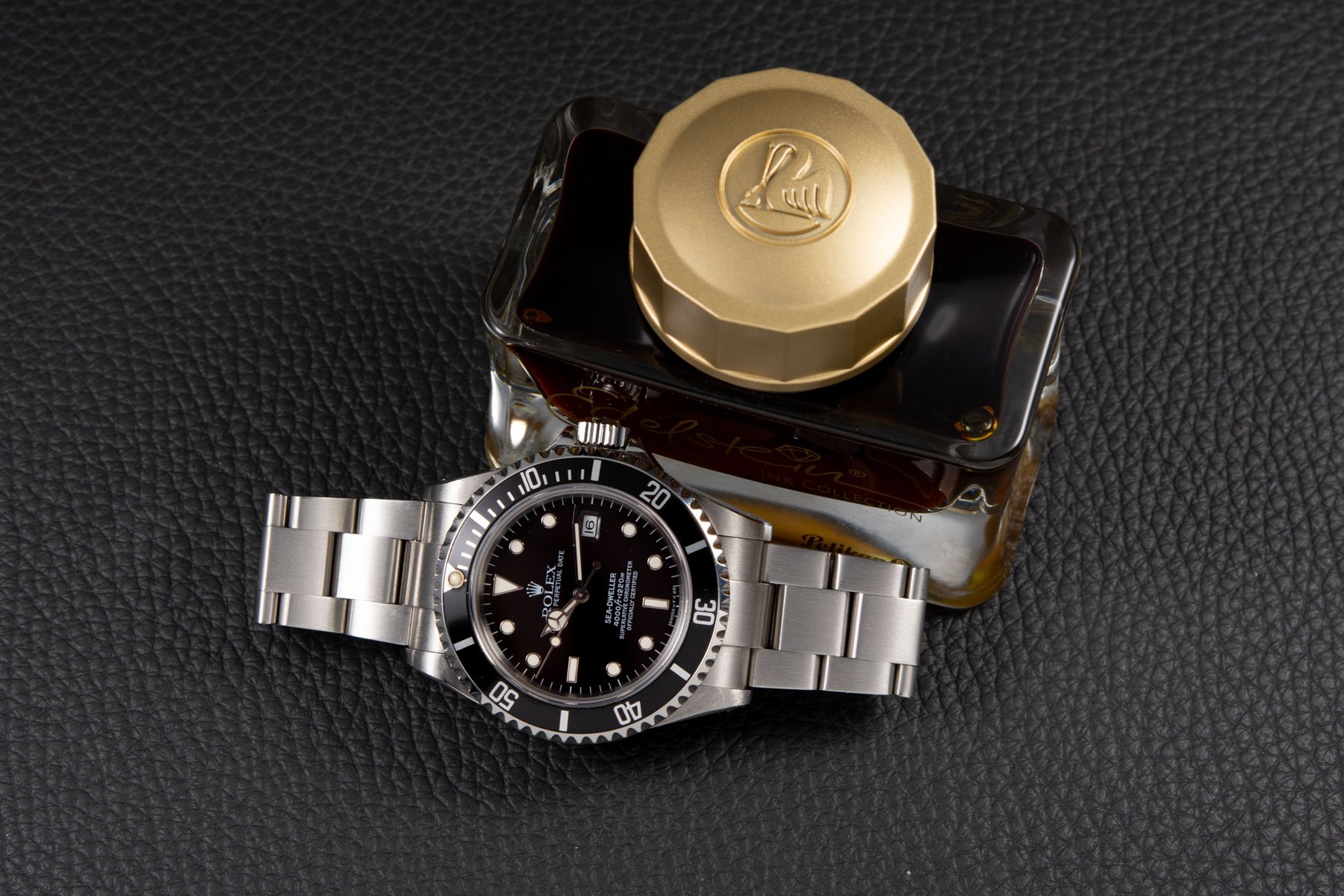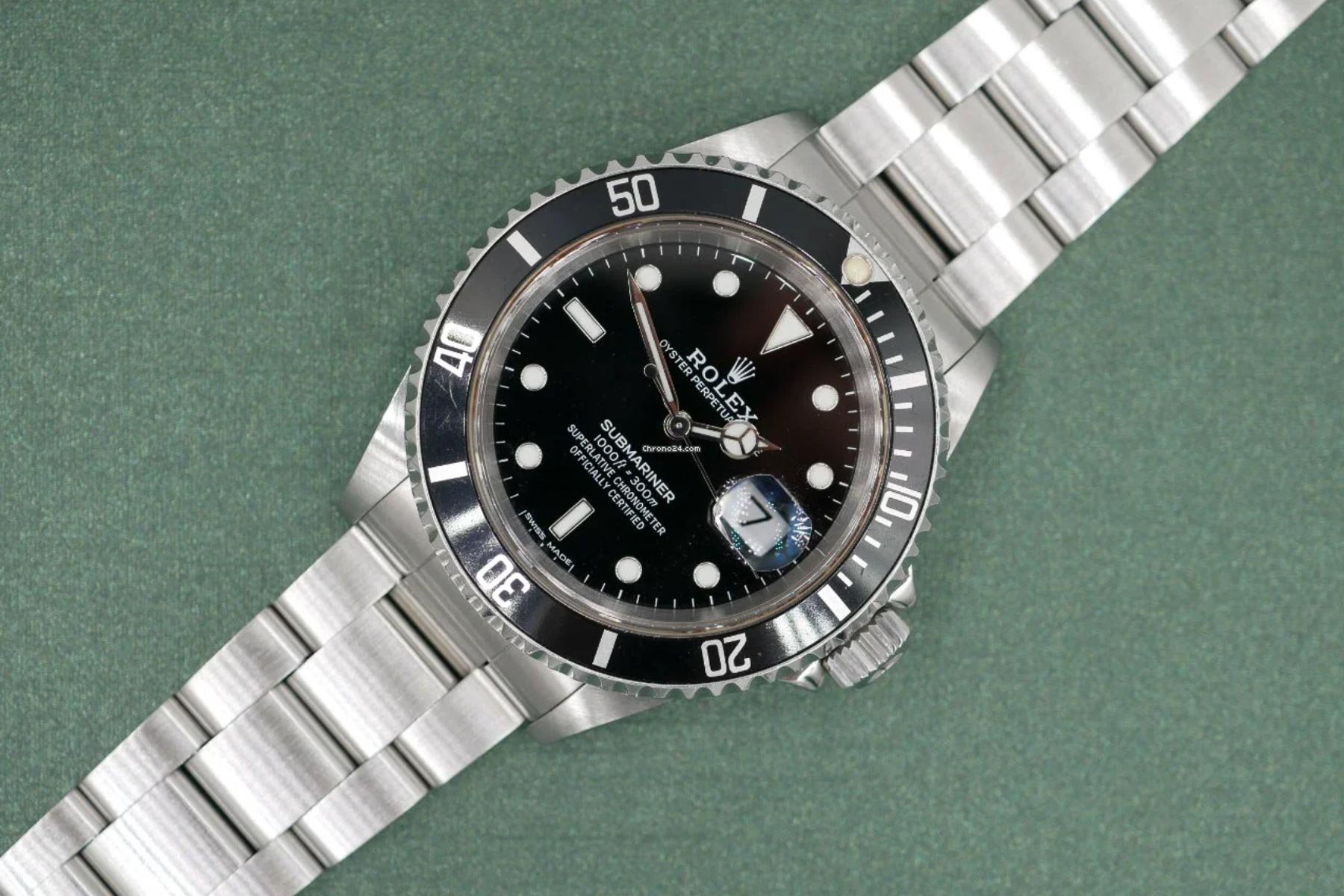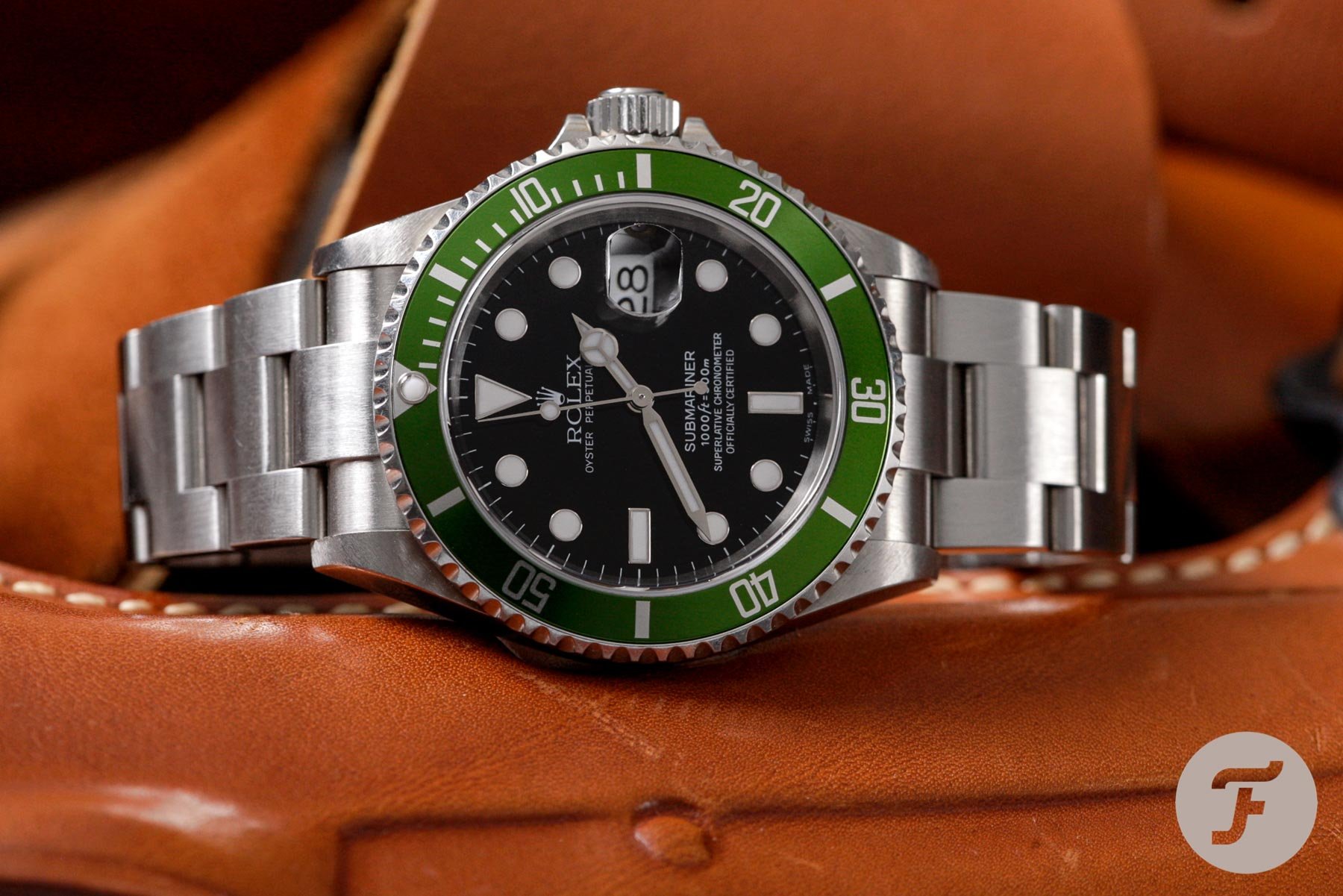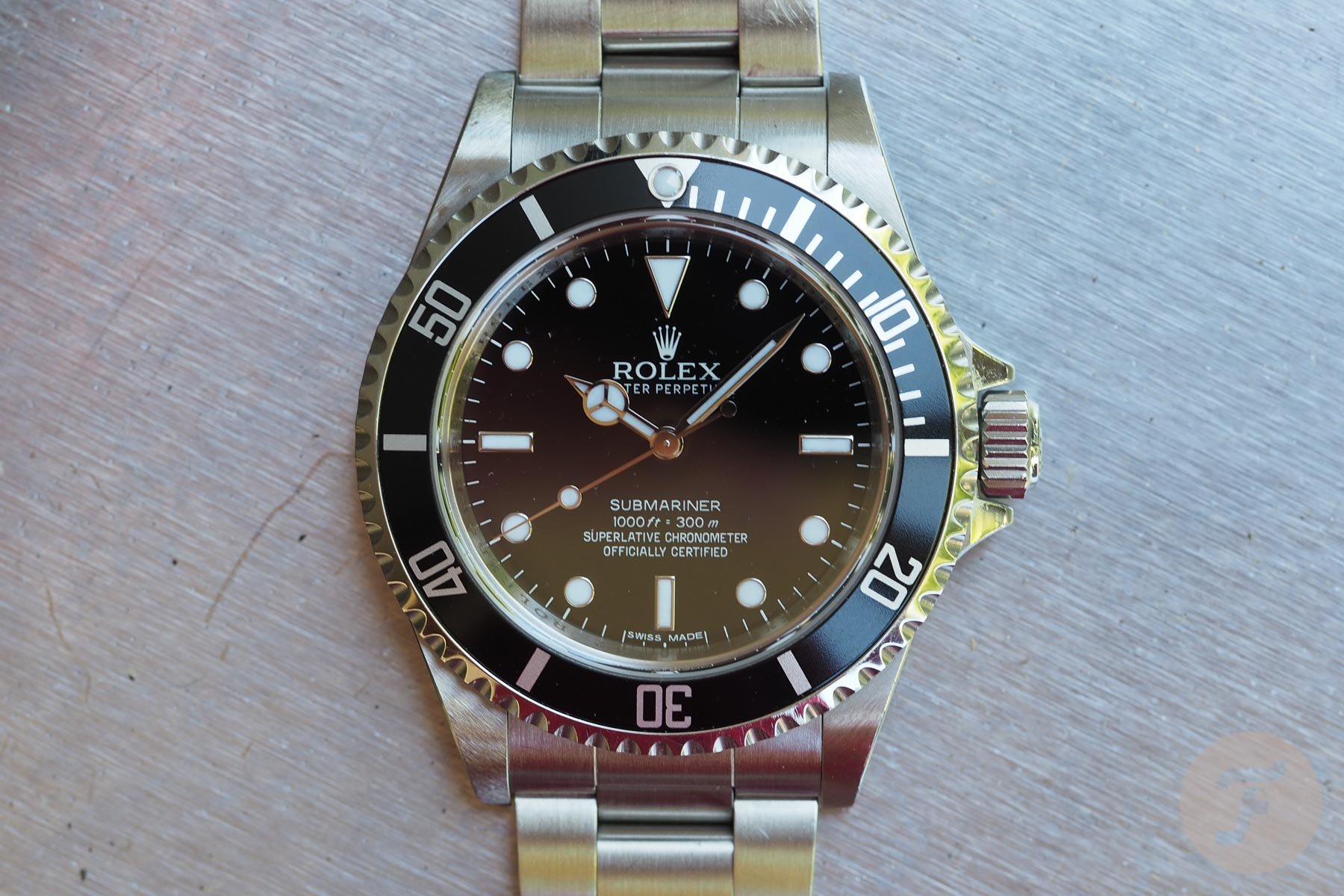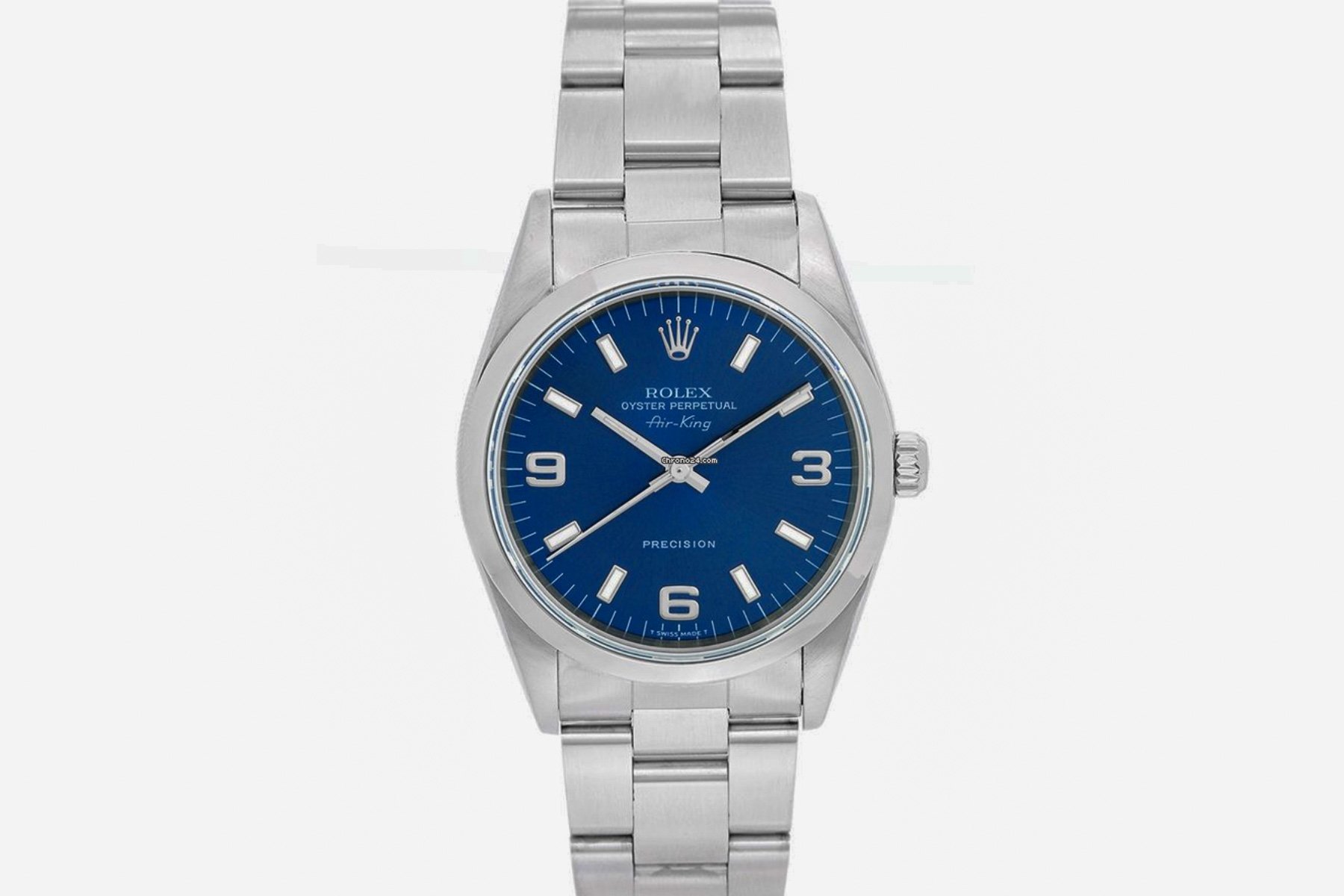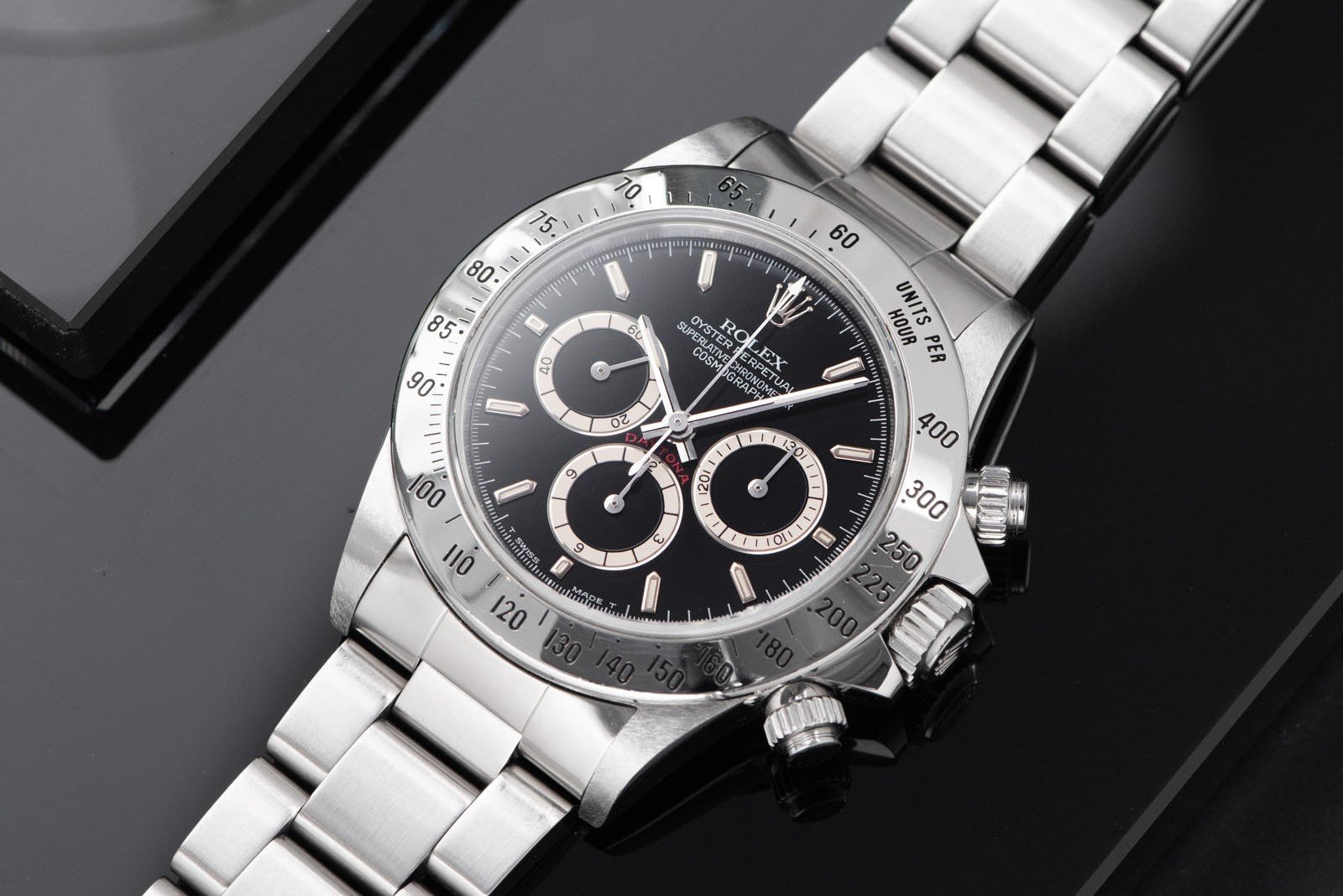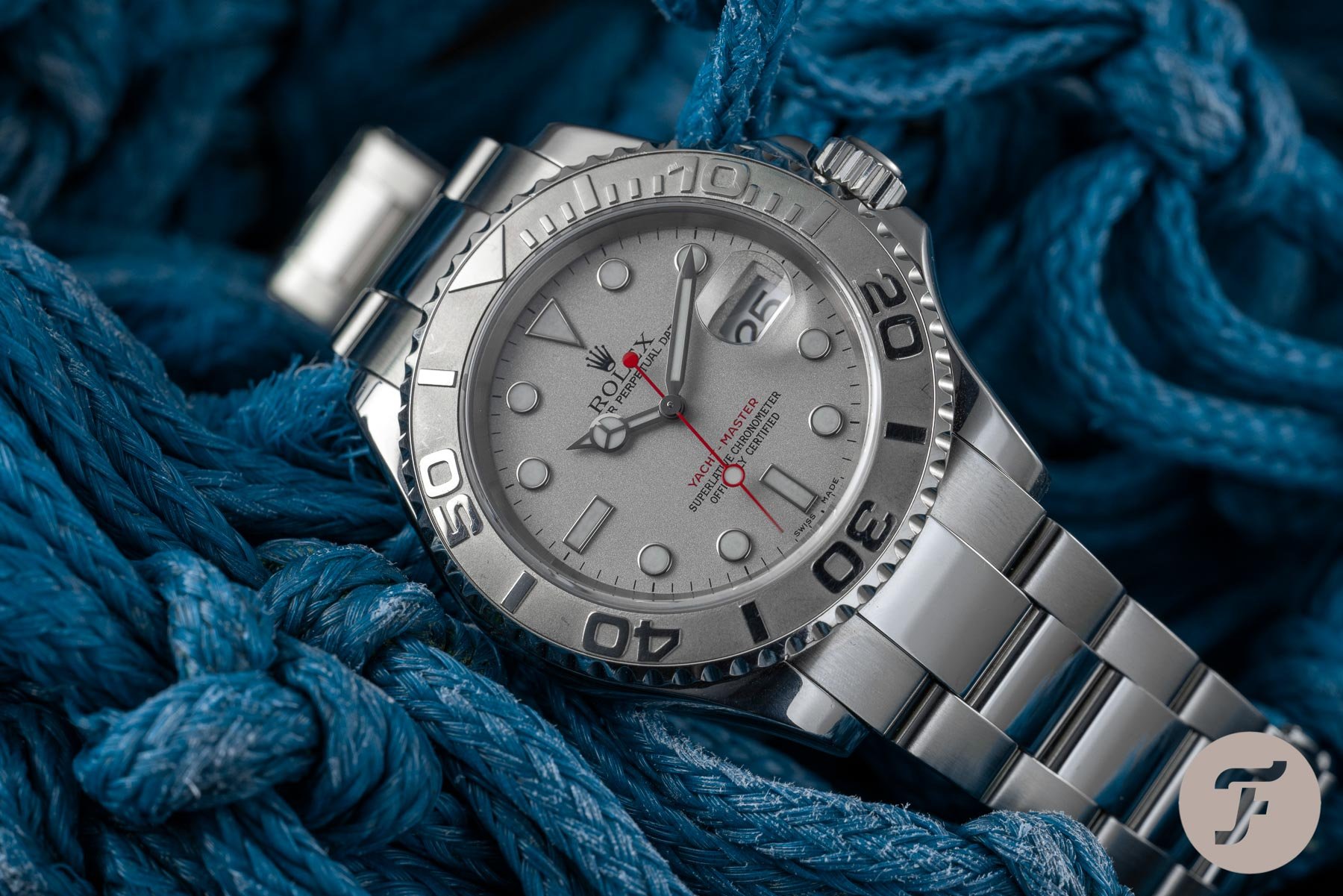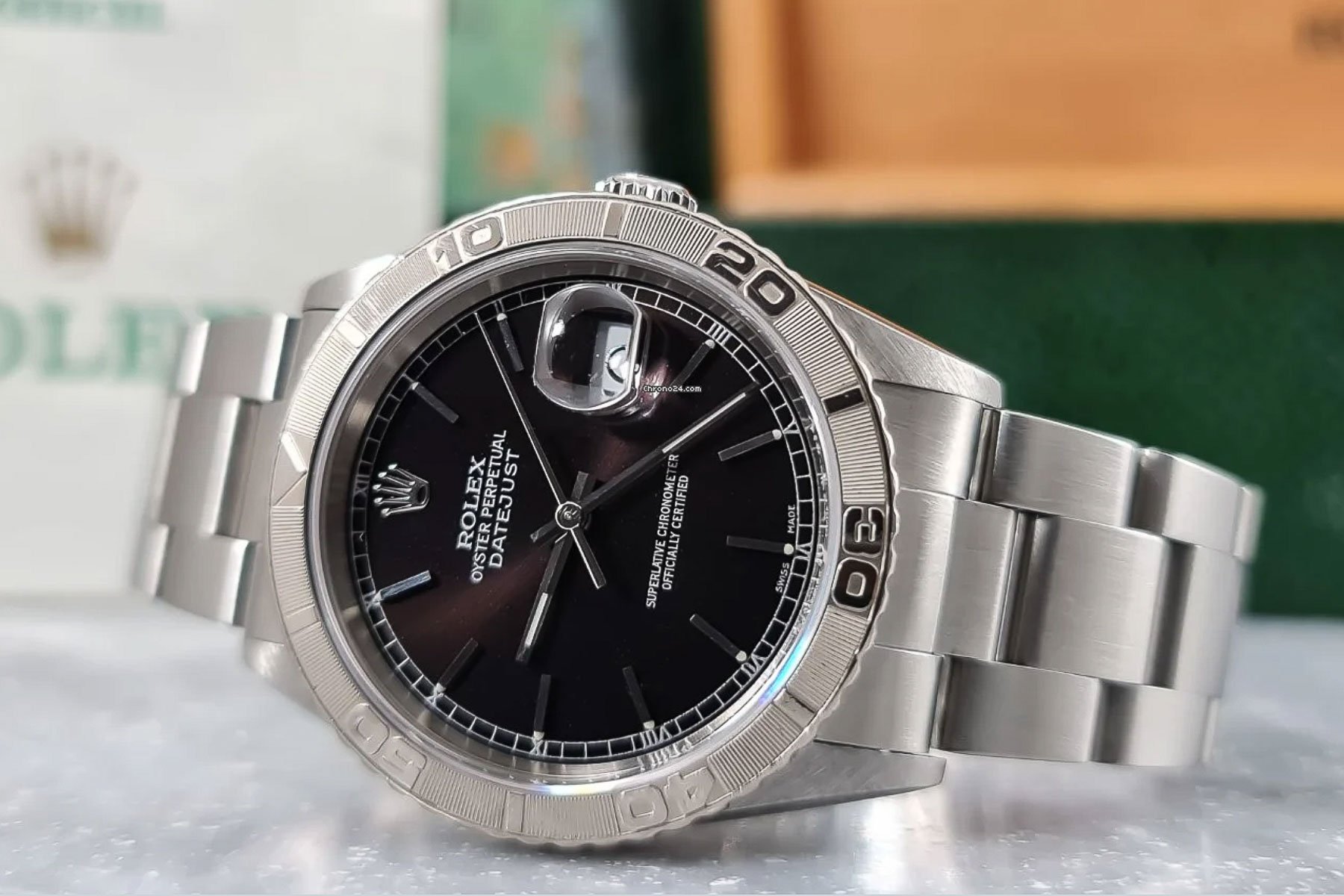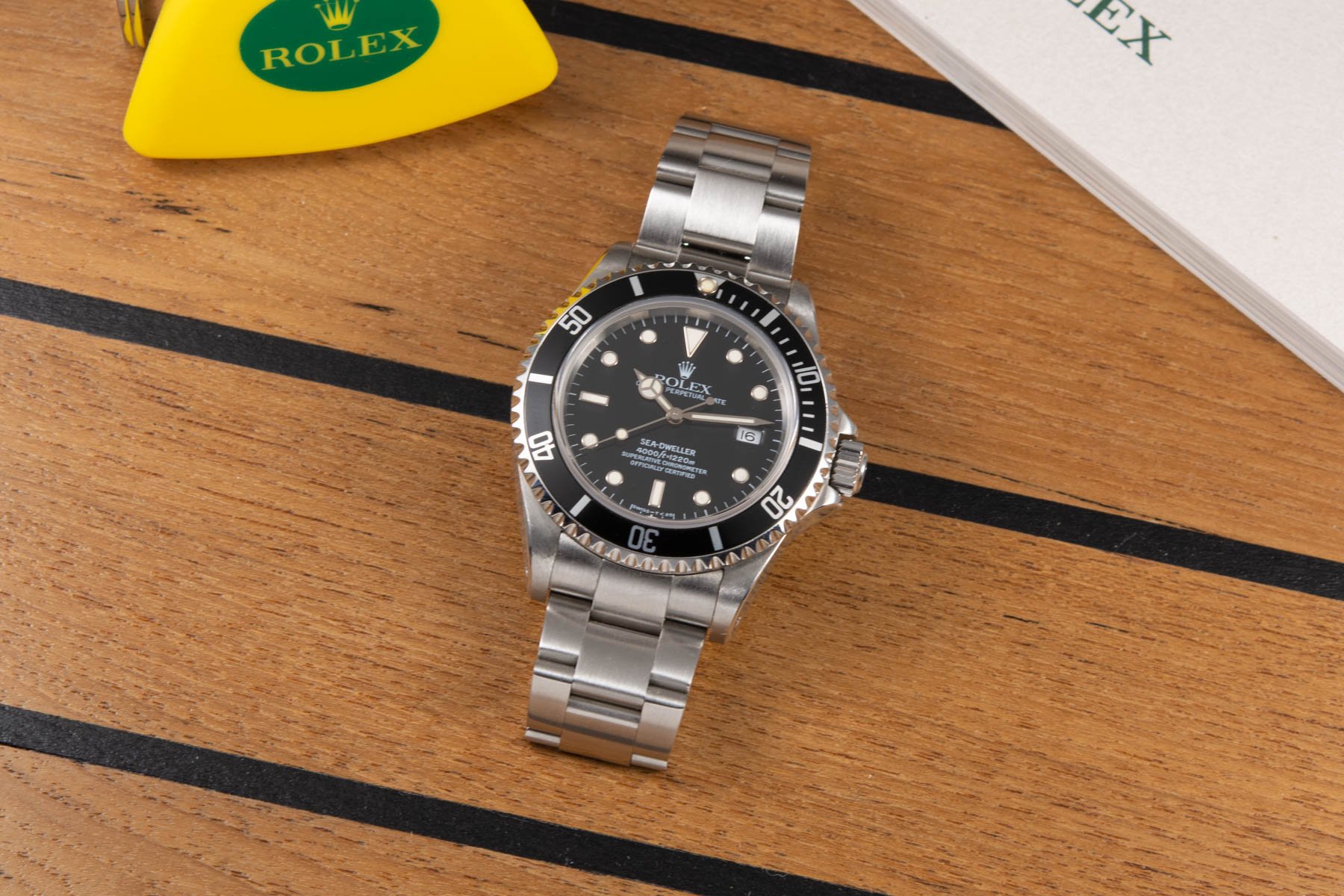Your Ultimate Guide To Rolex Five-Digit Reference Sports Watches
Chances are that if you’re above the age of 40, when you think of Rolex, you think of a Rolex five-digit reference. These watches were made for an astonishingly long period from the late ‘70s into the early 2010s. Today, we’ll talk about a slice of this timeframe with a focus on steel sports models from the ‘90s into the 2000s.
By the ‘90s (and probably earlier), one could argue that no one really needed the functionality found on a Rolex sports model. That’s not to say that something like a GMT complication wasn’t useable. Still, these were already modern times and instruments such as dive computers were already replacing the mechanical dive watch. For Rolex, this meant a move to selling the idea of something as a tool versus selling a watch that would actually be used as a tool. On the other hand, and as we will see, Rolex was still about offering value with some very focused, “de-contented” watches.
Modernity and bank-vault toughness
The ironic part about this period is that the watches actually became better than they had ever been. The Rolex five-digit references, as we will see, were sturdy and incredibly well built. These watches came after the relatively archaic four-digit models and were a real step forward in terms of modernization and finishing quality. On the other side, they began to foreshadow the jewelry-like qualities we see in the most current Rolex models. That’s a trait that seems to be serving the brand well but has turned off some of us traditionalists.
Typical details
When considering a sporty Rolex five-digit reference in steel, you can expect several typical details. Rolex switched to a sapphire crystal, marking the end of the acrylic era. These watches are also smack dab in the middle of the transition from Tritium lume to LumiNova in the late ’90s, which means that most models will never truly age. Rolex favored glossy dials containing indices with white gold surrounds. This was a step towards luxury by eschewing matte dials with printing.
Get ready for solid bracelets that typically, though not always, have hollow center links. The bracelets used stamped clasps and end links that transitioned to solid end links on many models. Similarly, cases with drilled lug holes began disappearing as solid end links became the norm. These watches also featured rock-solid movements with quickset date functions. Movements such as the 3186, 3130, and 3135 were typical and are known for their incredible reliability and COSC-rated timekeeping.
Ignored until recently
Collectors have frequently ignored the steel sports Rolex five-digit references because they’re newer, were made in huge numbers, and lack much of that “warm vintage charm.” Nowadays, though, with vintage Rolex out of reach and modern Rolex completely unavailable, these watches are enjoying deserved attention. People have discovered that there’s a ton of good in these models, and as a result, prices are now far beyond where they were just a few short years ago. Plus, there’s a wave of folks who recall these watches from their childhood or adolescence who now have purchasing power. The bottom line is that I don’t see prices coming back down any time soon. If that sounds concerning, the positive is that if these watches are treated well, they will look and perform like a modern Rolex for an owner’s lifetime.
Watch out for these pitfalls…
When buying a steel sports Rolex five-digit reference, there are some things to consider. Firstly, these watches were bought to be worn. Therefore, it has become challenging to find unpolished examples. The original buyers often weren’t collectors and these watches weren’t seen as collectibles from the get-go. Owners took them for regular servicing and this means that many spent time at the polishing wheel or, sadly, received a changed dial and/or hands. Secondly, boxes and papers aren’t a requirement, but on such a modern watch, they’re a difference-maker in terms of resale value. Then again, if you’re looking for a daily runner, don’t worry about sourcing a complete set. Instead, use your funds to find a nice, honest example.
But move confidently!
These steel Rolex five-digit-reference sports watches are robust and servicing them is easy if something goes awry. Parts are generally available and watchmakers don’t mind working on them. Finally, do your homework because there are fakes for these models. Yes, as Rolex became more of a luxury icon during this period, the unscrupulous were hard at work creating replicas and fake parts.
Before we begin, I mentioned that I will cover the steel sports Rolex five-digit models from the ‘90s into the ‘00s. I’ll break my rules from time to time but will try to stay on the straight and narrow. Also, keep in mind that there are some amazing two-tone and solid gold sports pieces from this era along with gorgeous Datejust, Day-Date, and Date references. This really was a great time for Rolex!
The Rolex Explorer 14270
By now, if you’ve read any of my articles or listened to Balazs and me on our podcast, you know that the Rolex Explorer 14270 is probably my favorite watch of all time. It was the first Rolex I purchased, and it was a watch that I wore daily for 13 years in a row. The 14270 debuted in 1989, replaced the iconic 1016, and was made until 2000. The 14270 came with a glossy dial and lume-filled indices with white gold surrounds. In a nod to tradition, though, it still kept its trademark “3-6-9” dial. It followed its predecessor by coming in a 36mm case with a smooth bezel and Oyster bracelet.
The Explorer used the oft-derided automatic caliber 3000. I say that because it used a more antiquated balance cock and flat hairspring. To be honest, I’ve never had an issue! In my article on this watch, I mentioned that this was a very “under-the-radar” Rolex and that some consider it the “anti-Rolex” because it is so subdued. In fact, it’s one of the reasons that made me put down my hard-earned money. I also mentioned that this watch was incredibly hard to buy when new because it was worn by a Japanese film star in a hit show. Years later, prices dropped as people wanted larger watches. Now, though, people have woken up and realized how charming this watch is on the wrist. As a result, prices begin at around €6K with great examples costing at least a couple thousand more.
Visit my 2015 article, which is a love letter to this watch. Also, check out this incredibly in-depth article on the 14270 over at Hodinkee.
The Rolex Explorer II 16570
If we’re talking about a slow burn of a watch, the Rolex Explorer II 16570 has to be the shining example. Yes, people bought this watch when it was new, but it was almost always hanging out in the display case. It also came out in 1989 and was made all the way into 2011! This was sort of a strange watch because it looked a lot like the first Explorer II (reference 1655) from the ‘70s, but instead of a fixed 24-hour hand, this watch functioned like a GMT-Master II with its 3185 caliber (the 3186 entered very late in the game and is quite rare). The primary difference is that the Explorer II had a fixed external 24-hour bezel. Some considered it as a lower-spec GMT, while others felt it looked a bit strange with that steel bezel.
What the watch did offer was a comfortable 40mm GMT case on an Oyster bracelet with stamped end links (until the early ‘00s). The 16570 also came with either a black or white dial, with the latter being somewhat unique for Rolex sports watches. I actually don’t own one of these, but I’ve given it thought. Unfortunately, I’ve slept too long, as prices now begin in the €7K range and move up from there. If it were me, I’d look for a ‘90s version with stamped end links and tritium. Oddly, I like both dial colors equally.
Visit Gerard’s article on an early 16570 Polar and this exhaustive history from Beyond The Dial.
The Rolex GMT-Master 16700
In my view, the GMT-Master 16700 is one of the coolest Rolex five-digit references. This was Rolex in its final throes of offering value to its customers. The GMT-Master was sold alongside the GMT-Master II during its production from 1988 until 1999 and marked the last time this model was offered. The 16700 was a lower-cost option than the 16710 and the reason was the use of a movement with less functionality — sort of. This watch was similar to all of the GMT-Master models that came before it with the hour and arrow hands being linked together. Therefore, the user had to use the bidirectional external bezel to show a second time zone in correspondence with the hour hand.
The automatic 3175 caliber did bring some niceties to the show such as a quickset date function, a 28,800vph frequency, and a hacking function. The watch came on either a Jubilee or Oyster bracelet and in a “Pepsi” or all-black-bezel guise. It used stamped end links and had drilled lug holes throughout the 12-year production period. Tritium was the choice of lume all the way until 1997. I remember looking at a lovely 16700 right before I bought my 16710 and it was a little less expensive. To be honest, I should have bought it instead as the bracelet and general user interface are more my speed. Today, these are expensive and barely trail the 16710 in price. Figure on €10K as the price of entry for one of these modern dinosaurs.
Bob’s Watches provides a thorough account of the GMT-Master 16700.
The Rolex GMT-Master II 16710
Another incredibly popular Rolex five-digit reference is the mighty GMT-Master II 16710. This watch first came to market in 1989 and was made all the way until 2007! Rolex offered this watch with both the Jubilee and Oyster bracelet and gave buyers the option of three different bezel inserts. An all-black version was available alongside the “Pepsi” (blue and red) and “Coke” (black and red). These watches came with the automatic caliber 3185, which allowed the user to “jump” the hour hand for easy changes upon landing in a new timezone. Interestingly, moving the hour hand is also the fastest way to change the date. The bi-directional outer bezel was still a useful tool in concert with the corresponding arrow hand, but the hour and arrow hands were no longer “in concert” as on the old GMT-Master models.
The 16710s used caliber 3185 for most of the production period, with the 3186 coming in at the very end (the differences were incredibly small and primarily related to making the date-change function more robust). Other changes occurred during the 18-year period such as moves from tritium to LumiNova to Super-LumiNova. Also, the end links changed from stamped to solid around 2000 and the cases lost their drilled lug holes around 2003. The 16710 is a watch that is still commonly seen today on the wrists of normal, everyday wearers. It’s incredibly robust, capable, and a bit more colorful than a Sub depending on the bezel. As such, it is a darling on the secondary market and prices begin at €11K for a well-worn example.
Millenary Watches provides a nice overview of the 16710 and describes many of the little variants that occurred during the lengthy production era of this watch.
The Rolex Sea-Dweller 16600
The 40mm Rolex Sea-Dweller 16600 was made from 1988 to 2008 with few changes aside from the lume and a move from drilled to a non-drilled case. Intriguingly, these watches used solid end links from the beginning. The Sea-Dweller has always been the ultimate Rolex tool watch with its helium valve and beast-like thickness due to 1,220 meters of water resistance. Looks-wise, this watch is pure Submariner, but you’ll note that it lacks a Cyclops even though it has a date window. Some people like that cleanliness, but the Sea-Dweller was never a real volume seller. Blame the thickness or the higher initial price tag, perhaps.
In fact, a few months after this watch was discontinued, my dad bought a NOS model at a 20% discount. Imagine that today! What I can say is that I’d much rather own a Sea-Dweller than a Submariner Date and you get the same bulletproof 3135 movement. There’s something neat and elemental about them. Plus, the watches feature a rare show of braggadocio from the ultra-serious brand with some engraving on the case back. Prices for the 16600 were deep in the abyss until the last year or so. What was once €6K all day long now commands at least €10K.
RJ explains why the 16600 had to return to his collection and Bob’s Watches gives a nice, brief history of this reference.
The Rolex Submariner Date 16610
Now, we move on to what has to be the most popular steel sports Rolex five-digit reference. The Submariner Date 16610 was THE Rolex to own in the ‘90s into the new millennium. I don’t know why it was this watch that caught fire, but from Wall Street down to the docks, these were truly everywhere. Admittedly, this is one of my least favorite pieces from this era. I find it a bit boring and I don’t love the Cyclops. Regardless of my views, this watch lived an amazingly long life from 1988 to 2010 and came in a 40mm case that offered 300 meters of water resistance. Here again, the lume changed in the late ‘90s and Rolex added solid end links around 2000.
In 2003, the line got a second model called the 16610LV for the 50th anniversary of the Submariner. This watch kept the same 3135 movement but added a green bezel insert and a “Maxi” dial and hands (larger than the normal 16610). The LV is affectionately known as the “Kermit.” Kermits have garnered a hefty premium over their less colorful counterparts, with prices starting at a whopping €18K. The 16610 in black form starts at a more reasonable €9K. Note that due to the immense popularity of the 16610 over its lifetime, the vast majority received polishing and/or dial updates.
The Swiss Watch Trader gives a nice visual history of the all-black 16610. The Watch Lounge shows us how the green LV “Kermit” changed over time.
The Rolex Submariner 14060/14060M
Much like the aforementioned Explorer 14270, the Submariner 14060 is one of my favorite watches. When we think about this era as a transition from the utile tool watch to a more ornamental possession, this basic Submariner existed as a holdout. In other words, it kept a lot of the old-world traits and did so longer than any other Rolex watch. The 40mm 14060 debuted in 1990 and brought a sapphire crystal along with the same 3000 caliber as the Explorer. Here, though, Rolex made it one of the few non-COSC rated watches that the brand still offered. This meant that the watch kept its “two-liner” looks consisting only of the Submariner name and the 300m depth rating.
In 1999, the 3130 movement found its way into the Submariner and the watch was known as the 14060M. This movement brought a Breguet overcoil versus the previous flat overcoil. However, Rolex still decided not to go for a COSC rating. In 2007, just four years before the watch was discontinued, a “four-liner” came with the chronometer certification.
Other charming details abound on this watch, and thankfully, they remained throughout the entire production life. Consider nice touches such as drilled lug holes, stamped end links, and an aluminum bezel insert. When the Submariner 14060M left the stage, it sold for less than €6K at retail. These days, expect to pay €10K or more for a nice example.
The 14060M was one of my earliest reviews in 2016 and I recently wrote about it again when the watch turned ten years old. Gerard shows us the two-liner in this article.
The Rolex Air-King 14000/14010 and 14000/14010M
If you’ve read through the previous models, you’ll notice a pattern with models sans date. The Air-King 14000 and its 14010 variant (different solely because of its engine-turned bezel) debuted in 1999 and also used the automatic caliber 3000. The Air-King is notable for a couple of things. Firstly, it was available with dials featuring stick indexes as well as an Explorer-like 3-6-9 dial. Also, compared to other steel sports Rolex five-digit references, the Air-King came in a wide variety of dial colors.
It was also quite small, even by 2000s standards, at just 34mm in diameter. Finally, the Air-King 14000 or 14000M (made from 2000 to 2007 using the 3130 automatic) never received a COSC rating. This was the entry-level Rolex and the brand did its best to control pricing. If the size works for your wrist, these are great watches and there’s something charming about the no-frills specs. These days, €4K should help net a nice example. I particularly like the blue-dialed versions!
Rescapement has a nice history of the Air-King and even refers to it as “The Forgotten King.”
The Rolex Daytona 16520
Well, for many, the Rolex Daytona 16520 is now one of the most famous watches of all time. After all, when it was released in 1988, it became Rolex’s first-ever automatic chronograph. Yes, manual-wind Daytonas were languishing in the showcases up until this point — truth, my dad tells stories of how the local AD in Fort Lauderdale simply couldn’t sell them. Interestingly, 19 years after the first automatic chronographs debuted, Rolex still didn’t have its own in-house solution. Instead, the brand turned to Zenith and opted to modify the El Primero movement. Rolex made changes such as removing the date function, slowing down the movement to 28,800vph, and giving it a COSC rating. The end result was the caliber 4030 automatic chronograph movement.
The Daytona 16520 measured in at 40mm and featured a polished metal external tachymeter bezel. Like the Explorer II, it also came in both black and white dial options. This line of Daytona models also introduced a polarizing trend that found its way to later generations of the more luxurious sports models — polished center links. The Daytona 16520 is amongst the most collectible of all-steel sports five-digit references, and little variants and aged dials bring in big money. These days, you’ll need €30K to enter the running for one of these watches. The positive is that they’re always in demand and are generally quite easy to sell.
Bob’s Watches gives us a great rundown on the ultra-popular Dayton 16520.
The Rolex Yacht-Master 16622
The Rolex Yacht-Master 16622 is one of the more eccentric steel sports Rolex five-digit references. As we’ll see, it’s the “blingiest” of the bunch, and that makes it a bit of an outlier versus the more focused models we’ve already mentioned. The Yacht-Master first came to light in 1992, but it was only available as a full gold model. It took until 1999 for Rolex to bring a 40mm steel version, but there was a catch. In order to keep the luxury quotient high, the steel model came with polished center links, solid end links, a platinum bezel, and a platinum dial. This combination of steel and platinum is known as “Rolesium.”
The Yacht-Master has always struck me as a gussied-up Submariner, but this is a tad unfair. The watch actually brings a different case to the party. Note the rounded lugs and unique crown guards. The 16622, for better or worse, is also the watch that reintroduced the Maxi dial to the brand. I’ll admit that the Yacht-Master has never been for me, but I don’t abhor them any longer. These 3135-powered watches are still a relative “deal” amongst the other steel sports Rolex five-digit references considering the precious metal content and robust size. Figure on €10K as a good landing price for one of these ocean-going watches. The nice thing is that there are plenty of these available as Rolex made them up until 2011!
Much like his Sea-Dweller 16600, Robert-Jan has had an on-again, off-again relationship with the Yacht-Master 16622.
The Rolex Turn-O-Graph 16264
For the final steel sports Rolex five-digit reference, I’ll mention an edgy piece in the Rolex Turn-O-Graph 16264. It’s edgy because the Turn-O-Graph was technically part of the Datejust line. And while a Datejust can handle the same sports activities as most of the watches we’ve discussed, it’s not considered part of the sports lineup. My reason for including the 16264 is that it was historically a pilot’s watch and it features an external rotating bezel.
The 16264 first debuted all the way back in 1988 and was made well into the mid-2000s. From what I gather, it was a niche watch at best and didn’t sell overly well. The watch came in 36mm form but featured an 18K white gold bezel that makes the watch appear larger than a typical Datejust. I’ve always liked that, but some people find the design too disruptive or clunky. Still, the watch contains the automatic caliber 3135 and is COSC certified. Also, because it was part of the Datejust line, it came in a variety of dial styles and was offered on both the Jubilee and Oyster bracelet. Budget around €6K for one of these unique watches.
Final thoughts on the Rolex five-digit references
For some, the Rolex five-digit reference models will never ooze enough vintage charm. However, what these watches may lack in 40 or 50-year-old charm, they largely make up for by being incredibly robust and suitable for daily duty. That may sound a bit boring, but I actually don’t think so. As time has passed, these watches have become more attractive and distanced from today’s blockier, shinier models. Has enough time elapsed that you’re starting to see these watches differently? Let’s hear your thoughts on these simpler pieces that so many of us recall.

